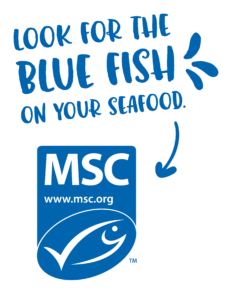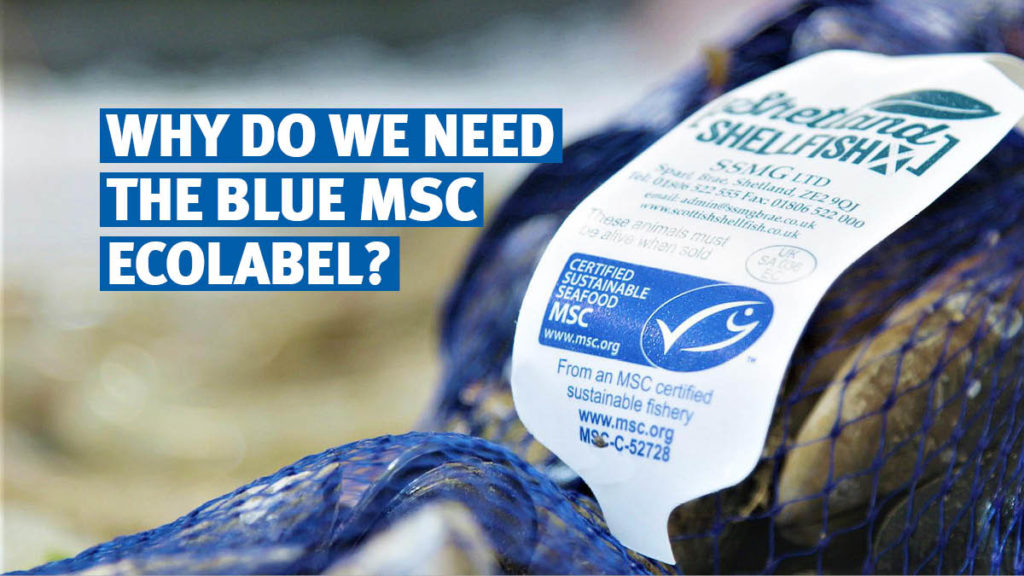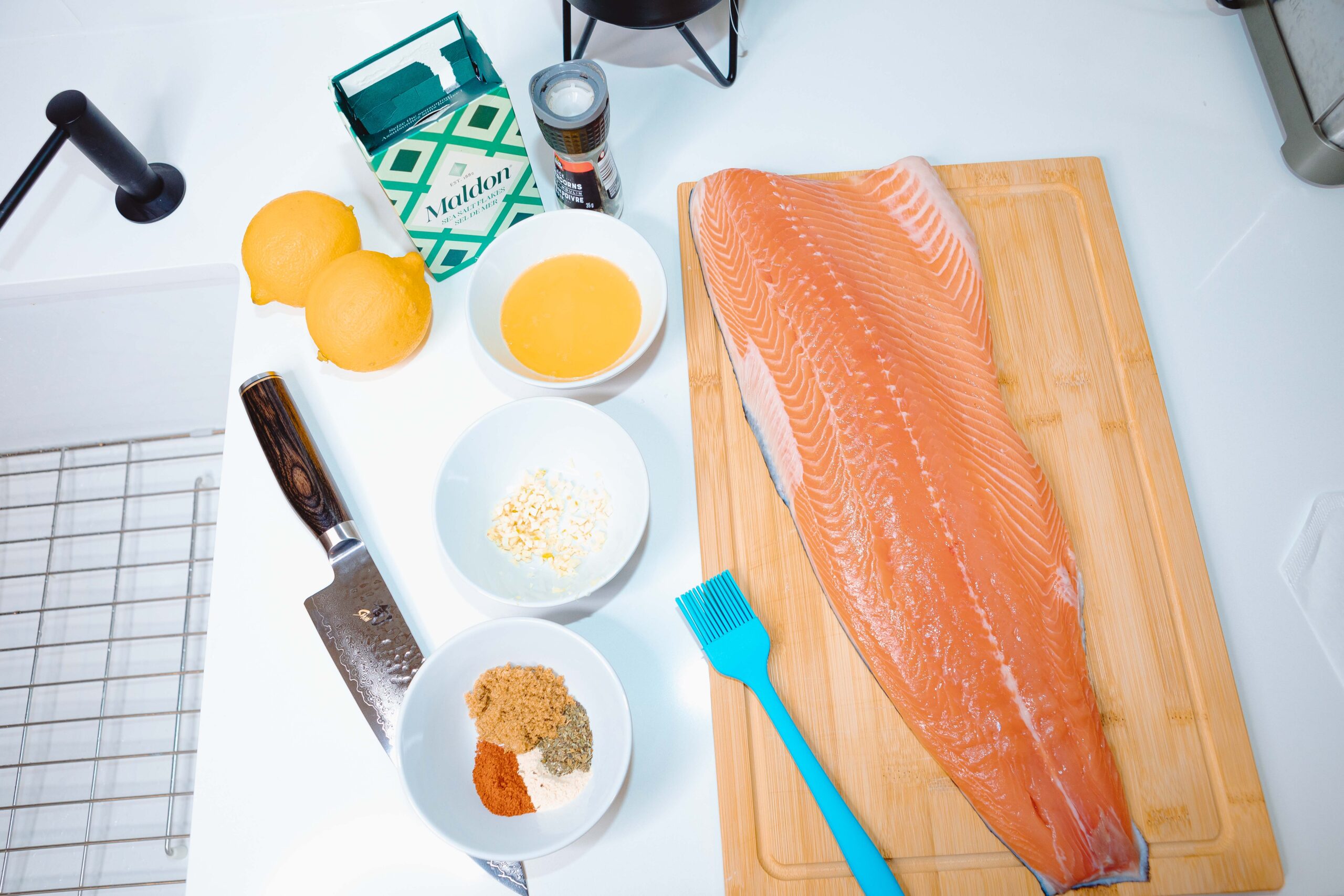
The MSC & sustainable seafood: How to buy sustainable seafood
Over the last few weeks, the MSC and I have been working together to celebrate National Seafood Month. If you’ve been following along, by this point you have likely read about the MSC certification process, how their blue fish ecolabel supports sustainable fisheries and fishing communities, and how the MSC works with fisheries science to improve marine ecosystem health.
We’ve addressed A LOT so far, but there is one big question that might still be unclear: how do you truly buy sustainable seafood?!
And that’s exactly what we’re going to talk about this week.
One of my major goals with this platform is to make it easier for the average person to understand sustainable seafood and make seafood purchases that they can feel good about. I’m grateful to be working with a partner like the MSC who feels the same way.

Buying sustainable seafood: What to look for
Look for the MSC blue fish label
Of course, looking for the MSC blue fish label is one of the easiest ways to know that you’re making a sustainable choice when purchasing seafood.
If you’re wondering whether your local grocery store or retailer sells MSC certified products, you can check out the MSC’s “Where to Buy MSC Certified Seafood” webpage. This resource makes it easier for consumers to make sustainable seafood choices by showing them exactly where they can find MSC certified products in North America.
Learn more about how to make sustainable seafood choices in my FREE Sustainable Seafood 101 Guide.
P.S. If you’re looking for more guidance on how to prepare your sustainable seafood once you get home, the MSC also has free cooking resources and recipes available online!
What about other ecolabels?
The MSC blue fish label likely won’t be the only ecolabel that you’ll see on products in the grocery store. There are a variety of other ecolabels and certifications that you’ll encounter and you may be wondering how the MSC label compares.
One major difference between the MSC certification and other certifications and ratings is that the MSC program drills down to individual fisheries and works directly with every single one. Meaning, each fishery is assessed on its specific impacts and contexts to determine if it meets the MSC requirements. This differs from other seafood recommendations or ratings which tend to focus on broader species types in general and provide high level information that consumers or caterers can use in making choices. Many base their recommendations on MSC assessments, but then use different criteria and methodologies to determine whether they think the species is generally sustainable, usually based on their review of information made available by others.
Several scientific studies and reports have consistently found the MSC program to be among the most trustworthy and widely available indicators of sustainable seafood.
The MSC is also the only labeling program for wild seafood with built-in traceability requirements that verify fishing is sustainable and legal, and products are correctly labeled. All seafood businesses that handle fish from an MSC certified fishery must have MSC Chain of Custody (CoC) certification and be audited each year to check that they are correctly using the blue fish label. DNA testing has shown that the mislabeling rate for seafood with the MSC blue fish label is less than 1%.
Finally, the MSC runs the only wild-capture fisheries certification and ecolabeling program that simultaneously meets best practice requirements set by the Food and Agriculture Organization of the United Nations (UN FAO),ISEAL, the global membership association for sustainability standards and the Global Sustainable Seafood Initiative (GSSI).

Why your choice of sustainable seafood matters
It’s no secret that our oceans are under tremendous pressure. Climate change and unsustainable fishing practices threaten marine ecosystems and the people who rely on them. One way that you can support sustainable oceans is through your seafood choices. By intentionally choosing responsibly harvested seafood, you’re supporting sustainable fishing practices with good management that are ensuring fish stocks and habitats are healthy and the livelihoods of fishing communities are secure.
Specifically, when you buy MSC certified seafood products, you’re supporting the entire marine ecosystem. That’s because the royalty fees that the MSC collects from their label use goes directly back to ocean conservation. The MSC has committed 5% of all royalties income from MSC labeled product sales to supporting fisheries through their Ocean Stewardship Fund. Which means each purchase actually helps fund conservation and sustainability efforts on the water.
Projects that have previously been funded range from mapping the seabed, to identifying sensitive habitats fishers should avoid, to trialing innovative methods that help deter seabirds from interacting with fishing boats.
The MSC label is not hard to find either! There are tens of thousands of certified sustainable products across more than 100 countries. Meaning, no matter where you are in the world or what kind of seafood you prefer, you’ll be able to make a sustainable choice.
–
Don’t forget that you can get more involved in the #SeasidewithMSC campaign and directly ask the MSC your questions about sustainable seafood by tweeting your questions with the hashtag #SeasidewithMSC. Or comment on any of our campaign posts on social media. All your questions will be answered here on November 11!



